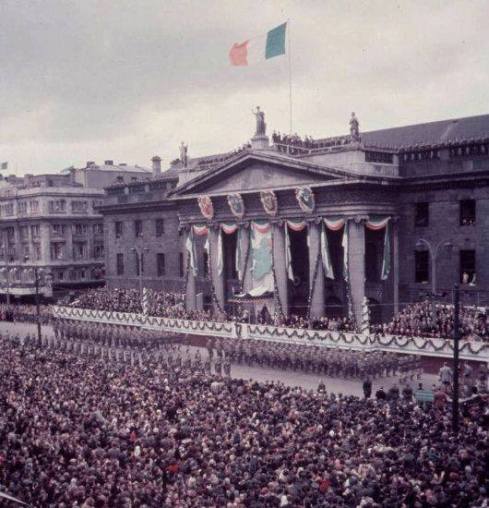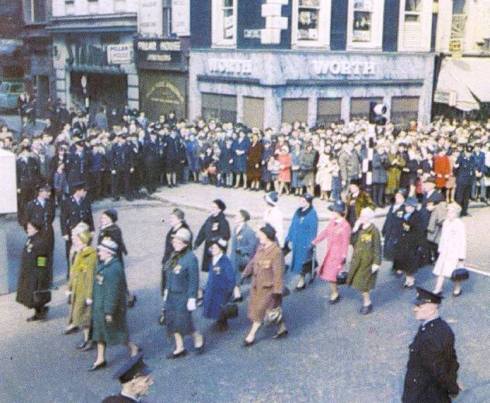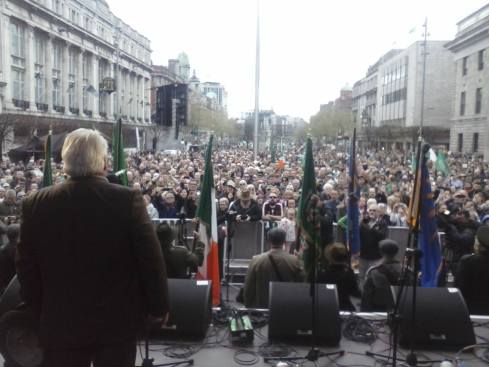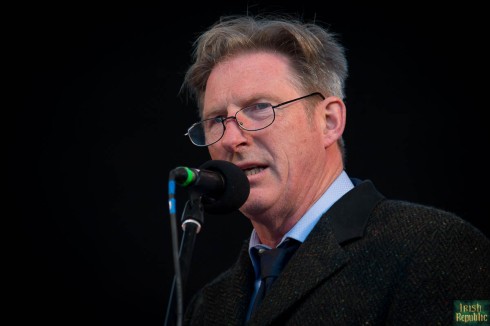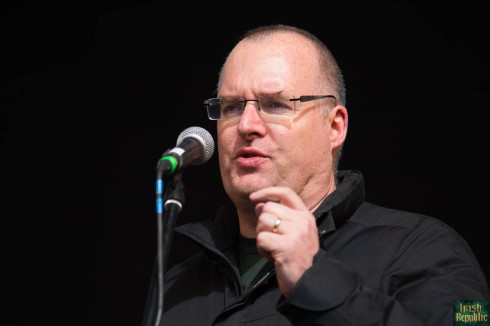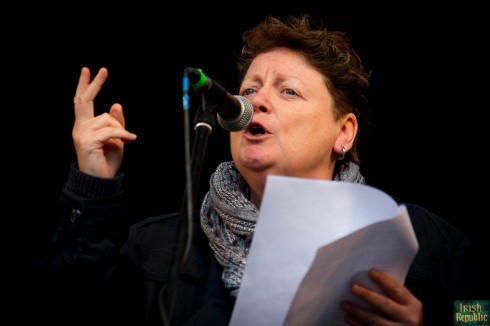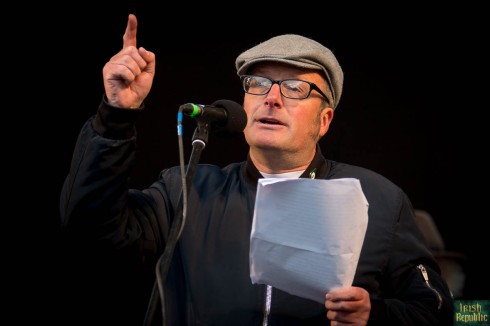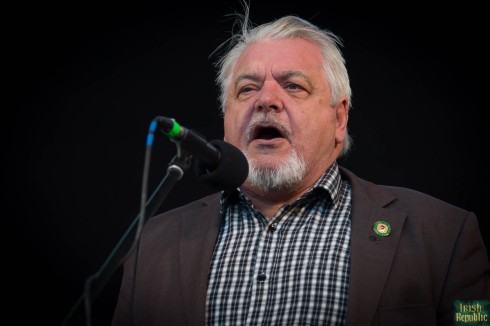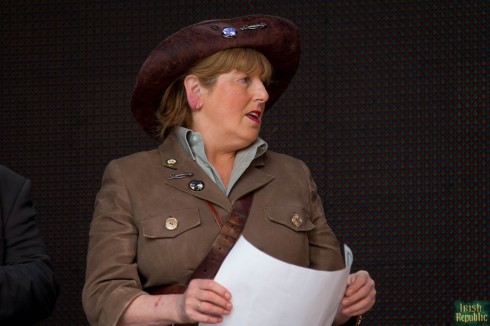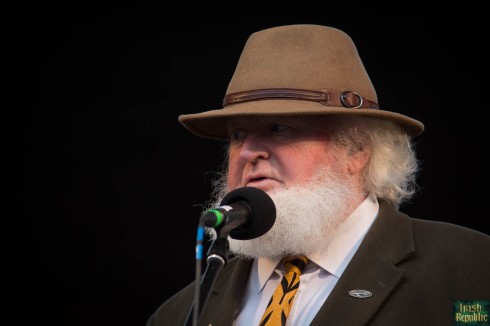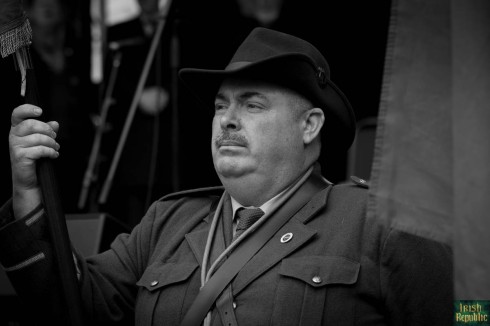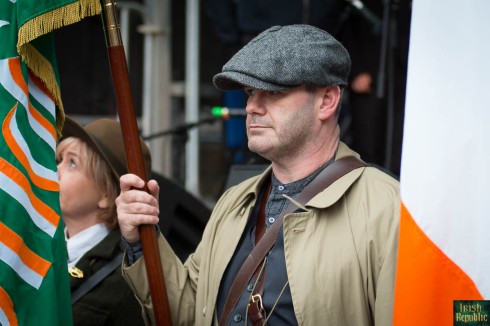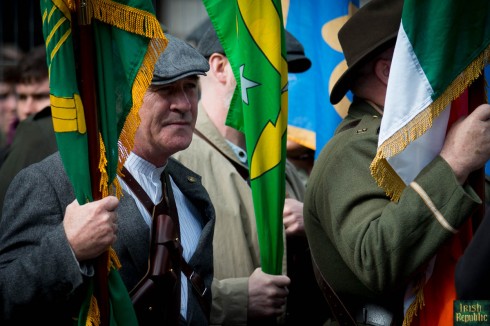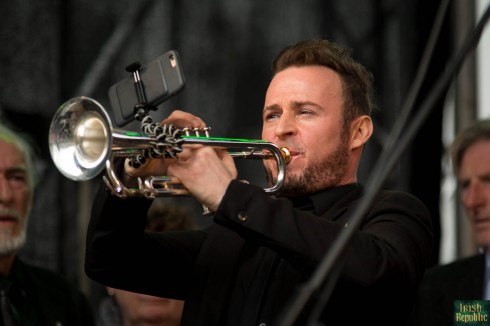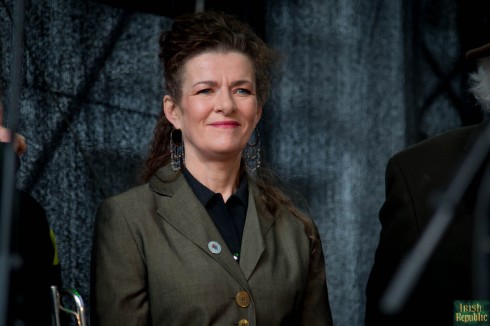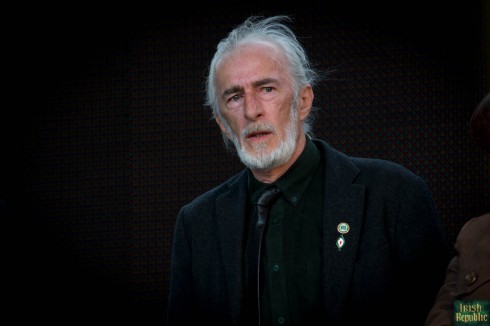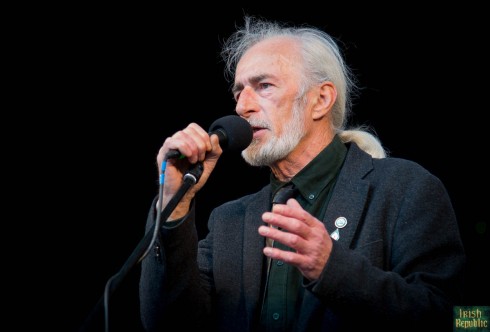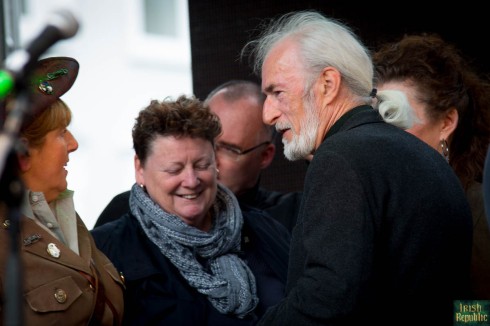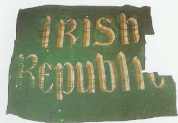I never had personal contact with my paternal grandfather, since by the time I was born he was eight years dead, but in my earliest memories as a young boy he was already becoming to me a man of mythic stature, a heroic figure in our family, a presence. What I knew of him as I grew was gleaned from snippets of information, often just overheard, sometimes the result of answers to my expressed curiosity about this absent man. It was obvious to me even from my earliest days that he was loved and missed by my father and his siblings, and that they were always proud of him and what he had done in his life. I had no image of him either until much later when I was shown a yellowing newspaper clipping that reported on the circumstances of his death with an accompanying postage-stamp sized photo, too small and too faded to give any real sense of the man.

John Stokes – D Company 3rd Battalion – Boland’s Mills Garrison
That newspaper clipping confirmed what I by then knew, that my grandfather, John Stokes, had died in attempting to rescue a young woman from drowning at the Shelley Banks near Poolbeg on the southern side of Dublin Bay. Other clippings, discovered later, gave greater detail to the story – that the young woman had been cut off on a sand island when the tide started to rise, that John had gone to her assistance and that when she couldn’t swim to shore he went back for assistance but disappeared underwater having suffered cramp. The young woman, Nellie Macken of Parliament Street, was rescued by a boatman. At the inquest into his death John was commended for his bravery. He was 63 years-of-age when he died. That one act of selfless bravery, particularly at a relatively advanced age, would have been enough to establish his heroism, but there was more to him than that one act.
Born in County Wexford, in Bunclody, his people were farmers. But they were, according to family lore, also perpetually rebellious, with an involvement stretching back to the United Irish rebellion of 1798, and the short-lived Wexford Republic of that year. As a young man, John had to flee Wexford to avoid a trial at the Wexford Assizes on a charge of holding off at gunpoint a bailiff who had caught him poaching game on a squire’s land. He made his way to Dublin where he eventually met and married my grandmother, Catherine Finnegan of Slane, County Meath.
By 1913 John was employed as a ‘motorman’ – a driver – with the Dublin United Tramways Company. When he and his co-workers walked off the job because of the company’s refusal to allow them membership of the Irish Transport and General Workers’ Union, led by James Larkin and James Connolly, that strike allowed the Employers’ Federation, led by Ireland’s leading industrialist William Martin Murphy, to declare a general lockout of unionised workers, leading to a sustained and highly organised attempt by the employers to starve the workers and their families into submission, a cynical programme that lasted over four months bringing death and sickness to the poorest of Dublin’s poor.
Although records of who was involved in and around Liberty Hall, the headquarters of the ITGWU, are virtually non-existent, it is highly likely that John and Catherine were active there. In our family, James Connolly – a central figure in the Lockout and in Liberty Hall – was revered above other leaders, as was Liam Mellows, a disciple of Connolly’s. And, right up to the time of her death in 1956, Dr. Kathleen Lynn, who had worked for the welfare of the locked-out workers and their families in Liberty Hall and had been appointed by Connolly as Chief Medical Officer to the Irish Citizen Army that Connolly led, and later as second-in-command of the City Hall garrison during the 1916 revolution, was a frequent visitor to Catherine at her home in Rathmines, as a friend.
John made the journey from striking tram-worker in 1913 to revolution in 1916 in which he fought in the Boland’s Mills garrison as a member of D Company 3rd Battalion of the Volunteers, under the command of Eamon de Valera. On April 24th, Easter Monday, he turned up for duty with his Howth rifle and was put in charge of four Volunteers to take over the Gas Works and went from there to the Old Distillery (where the flag of the Republic was flown to divert British Army attention) until Wednesday when they were withdrawn back to Boland’s Mills. On Thursday he was ordered home by de Valera due to a back injury he had carried into the fight. Two days after the surrender he was arrested and taken to Richmond Barracks with the other revolutionaries, and then to Frongoch Prison Camp in North Wales via Wakefield Prison in England. He was released in August 1916. While in Frongoch his commanding officer was Terence MacSwiney. During the War of Independence John provided ‘assistance’ to D Company and to the Active Service Unit, and during the Civil War provided a safe house for guns and men to Anti-Treaty republicans with the active participation of my grandmother Catherine.
The Lockout exacted a high price on both John and Catherine. As a black-listed worker due to his union activity, and as a man of principle who would not work for certain employers on his own blacklist, he often found himself struggling to provide for his wife and young family. This evidently led to occasional difficulties between these two strong-willed characters, she who had children to feed and he who had principles to live up to. On Fianna Fail’s accession to power in government in 1932 Catherine wrote to Taoiseach Eamon de Valera asking if there was any work available for John to which de Valera replied that if John came to the Dáil on a certain date there would be a job as a porter. John’s response was that he hadn’t fought in 1916 to get a job for himself and refused the offer. He continued to find what work he could, mainly around the motor trade and occasionally as a hackney driver.
There is no doubt that John and Catherine made a solid contribution to achieving independence for Ireland from British domination, but they made another lasting contribution. In being active citizens in their everyday lives they passed on a set of worthwhile values and beliefs that they held dear to their children, who passed them on to their own children, and the ripple effect goes on.
They were not unique in this, and that is the impetus behind telling their story for the first time.
On the 24th of April 1916, ‘ordinary’ men and women, estimated to number between 900 and 1200, assembled at Liberty Hall and at various outposts to create a revolution against the mightiest empire in the world at that time. But very little is known about these heroic, generous people who would take extraordinary risks to benefit future generations with little prospect of gain for themselves and a high possibility of death, injury or long-term imprisonment as a result of their actions.
These people, these revolutionaries, do not figure in history books, other than as statistics. In writing them out of the story as individual people, each with a personal story to tell of before, during and after the revolution, we consistently fail the test of understanding what the revolution was really about and how important it was for them to achieve the Irish Republic that was the objective of the revolution.
There is no doubt that it suited what was, and continues to be, the political class in this non-republic, to narrow the focus of understanding the revolution by concentrating on its leaders and on its opponents, including the failed constitutional politicians and those who faltered and fell away from the revolutionary movement at the last minute.
Far easier to present the revolution as a ‘Rising’, or an ‘Insurrection’, or a ‘Rebellion’ if the motivations and the objectives of the rank-and-file men and women do not form part of the evidence of genuine revolution. Far easier to underplay the fundamental importance to the revolution of the 1913 Lockout and trade unionism, of the centrality of socialism to the Proclamation, of the most advanced form of feminism in the world which was revealed at the barricades and in the Proclamation, if the revolution could be sold as a ‘poets’ rebellion’ or some-such nonsense. Far easier to allow the Catholic church to successfully sell the spurious notion that it was behind the ‘rebellion’ and therefore a party to the gaining of independence when the direct opposite was the case. And so, far easier to create a permanent counter-revolution the aim of which was to destroy the Irish Republic so as to preserve a privileged class, to avoid redistribution of wealth, to introduce rigid controls on society and social behaviour, to embed capitalism and its local offshoot, gombeenism, as the hegemonic ideology.
Even at this late stage, when those generations with a direct connection with the rank-and-file revolutionaries are dying off, it is still possible to salvage these stories involving the ‘ordinary’ revolutionaries and their families, but further delay in doing so cannot be entertained. A concerted effort needs to be made to reach out to the remaining families of 1916 rank-and-file revolutionaries to gather the stories and where possible photographs, so that we can better know who they were and what were their personal circumstances, why they did what was extraordinary, and how it impacted their lives thereafter.
There is work to be done, first in finding the descendants, then in gathering the stories, collating the information and analysing it, and publishing the stories and the analysis. Once again that work involves, in a very fundamental way, ordinary people. But, given its potential scale, it will also need to involve local and national organisations and societies, sociocultural historians and researchers, archivists and museums.
After almost 100 years of obscurity we need to think of ways to acknowledge and honour these ‘ordinary’ revolutionaries. Apart from publishing their stories, one other way would be to ensure that included in the commemorations on April 24th 2016, Republic Day, will be a contingent of citizens, each individual – preferably a family-member – representing an identified revolutionary of Easter Week 1916, and assembled according to the garrison that the revolutionary was part of, to take part in the march-past at the GPO in Dublin.
It is time to give these ‘ordinary’ revolutionaries mythic stature, to understand the extent of their heroism, and to make their presence felt once again as we continue the task of completing their revolution by constructing the Irish Republic that they gave so much to bring to life. We owe it to them, we owe it to ourselves, and we owe it to the future generations.
